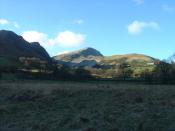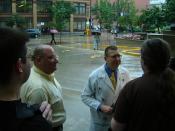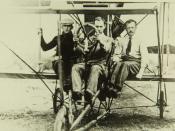This paper will look at the different ways the media reflects and affects society by examining the various relationships that exists between the media, the state and the citizens. It will firstly define key terms, allowing for controversial words to have a specific and continuing definition throughout the paper. Three key ideas, centering around the relationships between the media and the state, will make up the major part of this paper; namely how the media affects the state, how the state affects the media and failed attempts by the media to affect the state. Examples of each concept being discussed will be included, showing the notion in practice. Relationships between the media and citizens will also be examined and discussed, again using examples to show each in action. The relationship between the media and citizens will be discussed, examining the ability of the media to influence the public, the public's ability to influence the media and failed attempts of the media to influence the public.
The conclusion of this paper will detail the role of the media within society, how it operates and different functions it both performs, and attempts to perform.
The media is a constantly changing medium. It includes television, newspapers, magazines, journals, radio, cinema, advertisements, and interactive multi-media. It can also include the Internet, video games, mobile phones and computers ( O'Shaughnessy & Stadler, 2002 ). No undisputable definition of the term 'media' exists, however, for the purpose of this paper the following definition given by O'Shaughnessy and Stadler ( 2002 ), will be understood as conclusive.
The media are technologically developed and economically profitable
forms of human communication, held either in public or private ownership,
which can transmit information and entertainment across time and space to
large groups of people ( O'Shaughnessy & Stadler, 2002; Pg...



"Democracy and The News..."
Interesting to read and true...well done.
2 out of 2 people found this comment useful.